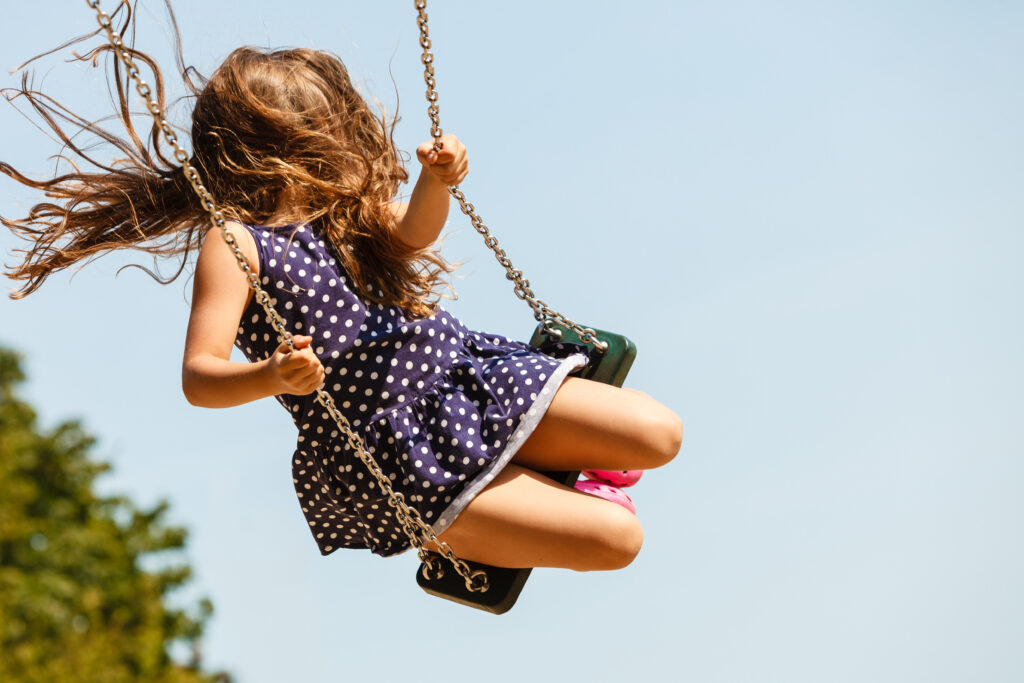Vestibular Input

The vestibular system includes parts of the inner ear and brain. Movement affects these areas. It is a critical system because it affects development in other areas. But what is vestibular input? In its simplest form, vestibular input is the sensation of any change in position, direction, or movement of the head.
The receptors are located in the inner ear and are activated by the fluid in the ear canals moving as you move. When you go upside down, for example, the fluid in the ear canals gives information to the central nervous system about your body’s position in space. Vestibular input gives our bodies information about whether we are moving with or against gravity, fast or slow, moving or still, and what direction we are headed. From infancy through adulthood, vestibular information contributes to the development of:
- Muscle tone
- Righting reactions
- Balance
- Postural security
- Eye movements
- Overall alertness
What Does it Look Like?
If a child is processing vestibular information appropriately, then movement comes with control, balance, and safety. The child feels comfortable jumping, climbing, swinging, and taking calculated risks in play because the vestibular sense is providing accurate information about where the body is at in space. If a child is demonstrating difficulty with processing vestibular information, then they may be under- or over-responsive to movement, which will impact overall activity. If the child is under-responsive to vestibular input, then they may be able to tolerate a lot of movement before it registers, therefore the body may be in constant motion. When a child is over-responsive, or hypersensitive, to vestibular input then they may not be able to handle movement at all, resulting in avoiding activities that challenge balance and coordination.
Both children can present as uncoordinated and likely demonstrate ocular motor difficulties as well. The vestibular and visual systems work together when our central nervous systems are in harmony. Vestibular dysfunction can present with difficulties tracking, focusing, and smoothly looking between two objects (saccades).
Support Vestibular Development
Supporting your child’s vestibular development can make a big difference in their balance, coordination, and sensory development. Here is a list of vestibular activities that are simple, fun, and engaging that are easy to set up quickly and required with minimal equipment:
- Swinging – playground swing or therapy swing in different directions and speeds
- Spinning and Twirling – spinning in swivel chair or twirling in open space that is safe to avoid falls
- Rolling and Tumbling – rolling on therapy ball forwards, backwards, or sideways
- Obstacle Courses – activities with various textures and elevations (crawling through tunnels, climbing over cushions, walking on balance beams)
- Jumping and Hopping – jumping on a trampoline or hopping on obstacles
For more information regarding vestibular activities check out Your Kids Table for some essential vestibular ideas.
Precautions for Vestibular Input
Always supervise the child closely during vestibular activities to prevent accidents or injuries. Make sure the environment is safe and free from hazards. Introduce new vestibular movements gradually to avoid overwhelming the child and progress the intensity as the child becomes more comfortable. Be aware of specific sensory sensitivities the child may have (spinning or rocking movements).
If you have any questions or concerns about your child’s vestibular or other sensory processing challenges, an occupational therapist can help create individualized interventions to meet your child’s specific needs and abilities.
